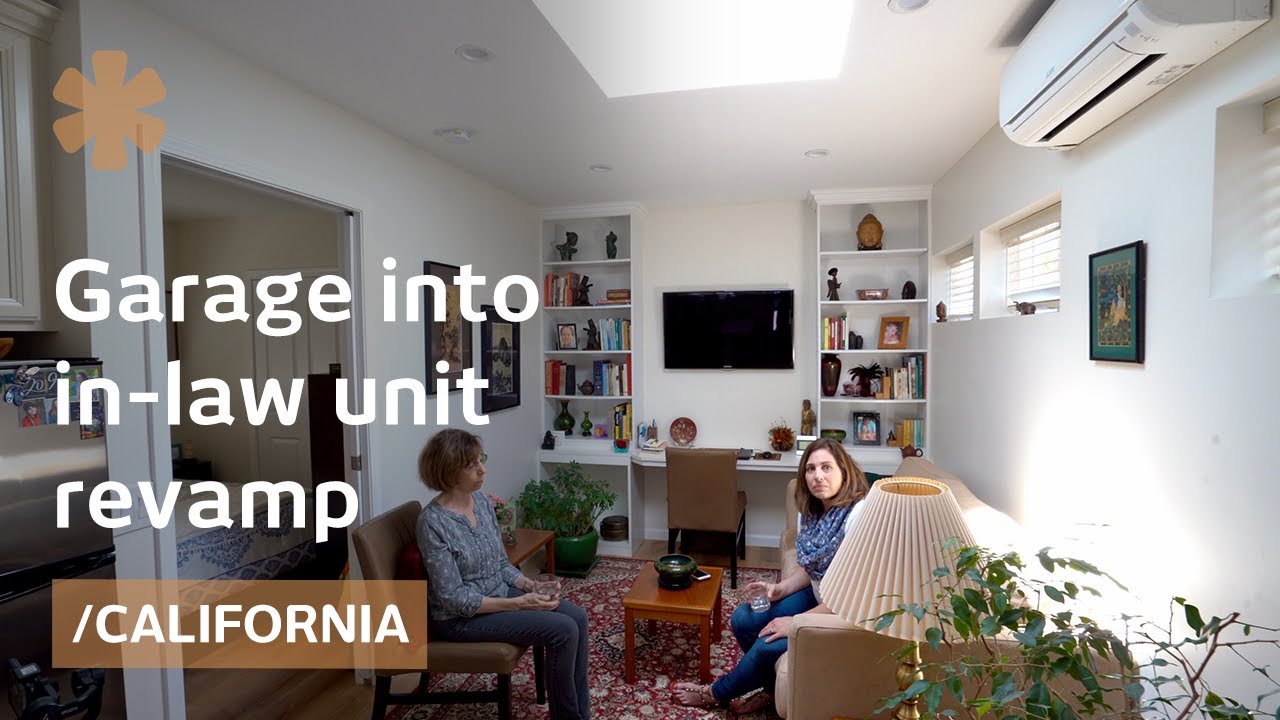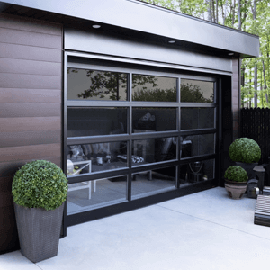
Living in a garage can be a nightmare. It is not a safe space to live in, and there are many hazards associated with it. Pests are one of the greatest risks. There are many reasons why pests like garages. They are quiet, dark and shaded which attract rodents as well as insects. Garages can be accessed easily. They are able to easily enter and exit the building.
Some of these animals can be dangerous to you and your pets. Muskrats, for example, can be aggressive and cause problems with seepage. If you cannot get rid them, they can inflict damage on your plants as well as spread rabies and other disease. Keep dangerous chemicals out your garage.
Garages that are not properly insulated pose another risk. It can become dangerous if it drops to freezing. You will need to heat the floors in this instance. A good solution is to install garage heaters. You can also create an apartment on the second floor.
There are many reasons why people choose to live and work in garages. Typically, it's because of convenience. Garages are usually very easy to access. This allows people to easily move in and out of the garage at will. The garage can be used to store valuable items.

While the garage provides a nice refuge from the elements, there are other hazards to consider. For instance, if you are planning to use the garage as an apartment, you will need a building permit. You may also need to comply with zoning laws, which can make it difficult to convert.
Most communities will have restrictions on the type of living space you can build. To convert a garage into living space, contact your local alderman.
You will also need to consult with your agent before you make a major change to your home. Keep your taxes and insurance premiums in check. Major changes may affect your risk profile and increase the cost of your house insurance. You can also reduce your house's value by adding an additional bedroom.
Although garages are great shelter from the rain, they can also be breeding grounds for pests. Depending on your area, you could have a variety of different bugs, including spiders, raccoons, ants, and rats.
Consider whether your garage can be converted into a living space. You should report any problems with your neighbor's garage to the local housing authority. You will find your name on the complaint form.

People have been known to sleep in their cars and use kerosene burners to heat their homes. You should use these appliances with care. Also, your vehicle may be at risk of being broken into.
The most important factor to take into consideration is safety. Safety is the most important factor to consider if you have children. Additionally, they should be kept away from wires and other items.
FAQ
What should I do with my current cabinets?
It depends on whether your goal is to sell or rent out your house. If you are planning on selling, you might want to take out and refinish the cabinets. This gives buyers the illusion that they are brand new, and allows them to envision their kitchens once they move in.
The cabinets should be left alone if you intend to rent your home. Tenants often complain about having to clean up dishes and fingerprints from previous tenants.
You can also consider painting the cabinets to make them look newer. It is important to use a high quality primer and paint. Low-quality paints can become brittle over time.
Why remodel my house when I could buy a new home?
While houses may get more affordable each year, the square footage you pay is still the same. Even though you may get a lot of bang for your buck, you also pay a lot for that extra square footage.
A house that isn't in constant maintenance costs less.
You can save thousands by remodeling your existing home rather than buying a completely new one.
By remodeling your current home, you can create a unique space that suits your lifestyle. Your home can be made more inviting for you and the family.
How much does it cost to gut and renovate a kitchen completely?
You may be curious about the cost of a home renovation.
Kitchen remodels typically cost between $10,000 to $15,000. You can save money and still improve your space's appearance.
Plan ahead to save money. This includes choosing the right design style and color palette to suit your budget and lifestyle.
You can also cut costs by hiring an experienced contractor. A skilled tradesman will know exactly what to do with each stage of the construction process. This means that he or she won’t waste time trying out different methods.
It is best to decide whether you want to replace your appliances or keep them. Replacing appliances can add thousands of dollars to the total cost of a kitchen remodeling project.
Additionally, you may decide to purchase used appliances rather than new ones. A used appliance can help you save money as you won't be charged for installation.
Last but not least, shopping around for materials or fixtures can help you save some money. Many stores offer discounts during special events such as Black Friday and Cyber Monday.
What would it cost for a home to be gutted versus what it would cost to build one?
Gutting a home involves removing everything within a building including walls and floors, ceilings as well as plumbing, electrical wiring, appliances, fixtures, and other fittings. It's often necessary when you're moving to a new house and want to make changes before you move in. It is often very costly to gut a home because of all the work involved. The average cost to gut home ranges from $10,000 to $20,000, depending on your job.
The process of building a home involves the construction of a house from one frame to another. Next, the builder adds walls, flooring and roofing. This is usually done after buying a lot of lands. Building a home can be cheaper than gutting. It usually costs around $15,000-$30,000.
It all depends on what you plan to do with your space. You will probably have to spend more to gut a house. It doesn't matter if you want a home built. You can build it as you wish, instead of waiting to have someone else tear it apart.
How can you tell if your house needs renovations or a remodel?
First, look at how recent your home has been renovated. A renovation may be a good idea if there have been no updates for several years. You might also consider a remodel if your home is brand new.
Your home's condition is also important. If there are holes in the drywall, peeling wallpaper, or broken tiles, it's likely time for a renovation. However, if your home looks great, then maybe it's time to consider a remodel.
A second factor to consider is your home's general condition. Is your house structurally sound? Do the rooms look good? Are the floors spotless? These questions are critical when deciding what type of renovation you should do.
What's included in a complete kitchen remodel?
A complete kitchen remodel is more than just installing a new sink or faucet. There are also cabinets, countertops, appliances, lighting fixtures, flooring, plumbing fixtures, and much more.
Homeowners can remodel their kitchens completely without needing to do major work. This means that there is no demolition required, making the process easier for both homeowner and contractor.
A kitchen renovation can include a variety of services such as plumbing, HVAC, painting, drywall installation, and electrical. Depending on how extensive your kitchen renovation is, you may need multiple contractors.
It is best to work with professionals who have experience in kitchen remodeling. Kitchen remodels often involve many moving parts, and small issues can cause delays. You should plan ahead and prepare a backup plan for any unexpected situations if you decide to DIY.
Statistics
- bathroom5%Siding3 – 5%Windows3 – 4%Patio or backyard2 – (rocketmortgage.com)
- Windows 3 – 4% Patio or backyard 2 – 5% (rocketmortgage.com)
- Following the effects of COVID-19, homeowners spent 48% less on their renovation costs than before the pandemic 1 2 (rocketmortgage.com)
- 57%Low-end average cost: $26,214Additional home value: $18,927Return on investment: (rocketmortgage.com)
- $320,976Additional home value: $152,996Return on investment: 48%Mid-range average cost: $156,741Additional home value: $85,672Return on investment: (rocketmortgage.com)
External Links
How To
How to Remove Tile Grout from Floor Tiles
Most people don’t realize they use tile grouting. It is used to seal joints between tiles. There are many different types of grout today. Each has its own purpose. This article will teach you how to remove tile grout off floor tiles.
-
Before you can begin the process, ensure that you have all necessary tools. A grout cutter, grout scraper and some rags are all essential.
-
Now you need to start cleaning off any dirt or debris stuck under the tile. The grout cutter can be used to cut the grout and remove any loose tiles. You should not damage any tiles.
-
Once you have cleaned everything up, take the grout scraper and use it to clean off any remaining grout. If there isn't any grout left, you can go to step 4.
-
After all the cleaning is done, it's time to move on. Take one of the rags and soak it in water. Make sure the rag has completely soaked in water. You can wring the rag out if it has become wet. This will ensure that any water remains in the rag.
-
Then, place the wet towel on the joint where tile meets wall. The grout will begin to crumble if you press down hard on the rag. Slowly pull your rag towards yourself and continue to pull it back and forth, until all grout is gone.
-
Continue with steps 4 through 5, until the grout is completely removed. Rinse the ragout, and repeat the process if needed.
-
After you have removed all grout, rub the tiles with a damp towel. Let dry thoroughly.